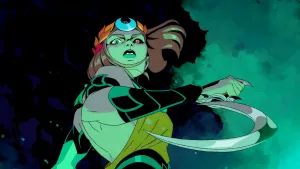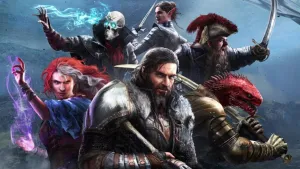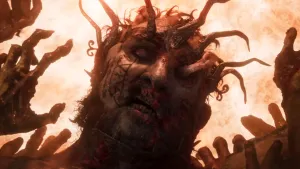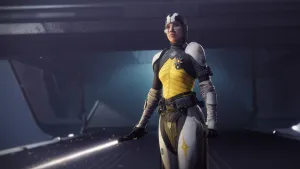Fable III: The Story So Far

The world of Fable has always mixed high fantasy action and deep storylines with a witty and whimsical flair that never takes itself too seriously. The trend looks to be continuing with Fable III. We checked in with Mark Llabres Hill, Fable III's lead writer, and asked him to help us get ready for the new game by reminding us of the major features of the world of Albion from previous titles, and giving a brief glimpse into where things are headed in this new installment.
“While Fable has its origins in a mixture of dark fairy tales and high fantasy, grounded by lots of silly humor, with Fable III we’ve transitioned to a more human-centered story,” Hill tells us. “The modern world has pushed the more magical elements underground. Industry, politics, poverty, warfare, and drama have become more important than woodland fairies or ancient rituals and magical artifacts. For that reason, we don’t dwell too much on the events of previous games – at least not in the main story. The world has moved on – and people have forgotten about these legends as they concentrate on simple survival. But the world is still full of side-stories that are completely steeped in the lore of past games.”
Nonetheless, there are some mainstays of the Fable world that we’ll definitely see again, but in a new light. Perhaps the most important returning idea is the heritage of characters from which the game’s protagonist arises. “Probably the most important aspect to learn if you haven’t played a Fable before is the idea of Heroes themselves,” Hill suggests. “Long ago there existed Guilds of Heroes, where powerful and magically gifted individuals would gather, unbound by morality. These people were a cross between knights, superheroes, wizards, and adventurers. Their powers were connected to an ancient bloodline and their symbol was the Guild Seal. Over time, these Heroes became more and more rare as the bloodline diluted, emerging sporadically, like a random mutated gene, if you want to think of it in those terms, until the Guild disappeared completely. By the start of Fable III, there are no Heroes left at all, and the Fable II Hero is considered to have been the last.”
In addition to a continued exploration of that vaunted heritage of heroes, there are also places within the world that may be familiar. One of the most important is a location that long time players should easily remember. “The city of Bowerstone is at the heart of Albion, and in many ways at the heart of the series. At the start of each game, we try plot a path through new regions and let players discover places on the map they’ve never seen before. It keeps the world fresh for both them and us,” Hill says. “But Bowerstone is part of Fable’s identity, not just because it’s the capital of the kingdom, but because it has such iconic landmarks: the town square with its clock tower, the bridge, the river, the lake on the outskirts. It has undergone two major changes since Fable II, though. The first is the process of industrialization, which has really transformed parts of the city, with its factories, smoke, and busy port. The second is Bowerstone castle, which was little more than a landscape feature last time around, but is now a key center of power.”


Along with that iconic location, a couple of important characters are returning as well. The most familiar is a certain sister to the original Fable’s Hero. “Theresa, the blind seer, began as an ordinary young girl caught in violent and tragic events in Fable I, and returned in Fable II as an immortal clairvoyant who felt compelled to guide Heroes,” Hill reminds us. “Whether she seeks to alter the cause of the future through her actions, or simply wants to make sure that fate follows its predetermined course, her guidance is invaluable to the Hero this time round too.”
Along with Theresa, Hill also promises the return of a favorite character from the first game: Reaver. This one-time pirate made a deal with the Shadow Court that granted him eternal life. Back in the first game, he betrayed the Hero, before departing for faraway lands to seek his fortune. The amoral immortal returns in Fable III, having now lived for hundreds of years. It’s a fun twist, and should make for some exciting encounters in the new game.
What about players who took the time to dig into the downloadable content from Fable II? In the final piece of that game, players bore witness to a fascinating vision about their Fable II Hero. He or she was to become the monarch of Albion, and would bear a child that would profoundly affect the history of the world. Sure enough, Lionhead doesn’t disappoint. The new game is about that child, or more clearly, about two children. “Five hundred years passed between Fable I and II, so there was little connection between those Heroes other than being part of the same mysterious, heroic bloodline,” Hill tells us. “But the Hero of Fable III is the child of the Hero of Fable II who, in the 50 or so years that have passed between both games, became the king or queen of Albion.”
The other child in the equation is the Hero’s sibling; the two have a complicated familial connection. “How can you possibly live up to the achievements of your parent? But you are not the previous Hero’s only legacy. His eldest son, and your older brother, Logan, is his successor on the throne. Though you are a prince or princess in name, and you are afforded the luxuries of living in a castle, you begin with no power or influence whatsoever.”
While the Hero of Fable III has grown up into a world where he has very little power or control, Logan is exactly the opposite, and he has not used that power wisely. “In the years immediately before the start of the story, King Logan has had an even more dramatic influence on the world,” Hill says. “His tyrannical policies and extreme behavior have driven the people of Albion into a state of poverty and oppression, planting the seeds for a revolution.” It’s not hard to guess what direction the story will go from there. A disenfranchised younger sibling? A rebellious populace? The early hours of Fable III will focus on the Hero’s rise from nobody royal to champion of the people. Where he or she goes from there is what the rest of the story is about.
Though Albion offers a rich world with lots of history behind it, one of Lionhead’s great talents is its ability to maintain that heritage while assuring new players can dive in at any place along the curve. Hill assures us that Fable III caters to both new and old players alike by assuming a fresh perspective on an ancient world. “We purposefully reinvent the world and, to some extent, its mythology with each game,” Hill says. “Not in the same way that Zelda or Final Fantasy do, because there’s a clear chronological connection between all the Fables, but in the sense that we’re not obsessed with creating vast, complex rules and historical footnotes which all become part of some holy canon everyone must memorize at the risk of becoming lost in arcane plot dependencies. There is a certain lightness to Fable which comes not just from the humor and the self-referential touches, but also from the freedom from all that high fantasy baggage. There is nothing wrong with incredibly detailed fantasy worlds that take themselves really seriously, but Fable was meant to be an alternative to those. We have lots of detail and background of course, because it’s incredibly important to make Albion feel like a fully realized world, but it’s usually full of jokes and isn’t required to understand the story. The idea is always to be completely accessible to new players while adding some extra love for the hardcore fans.”
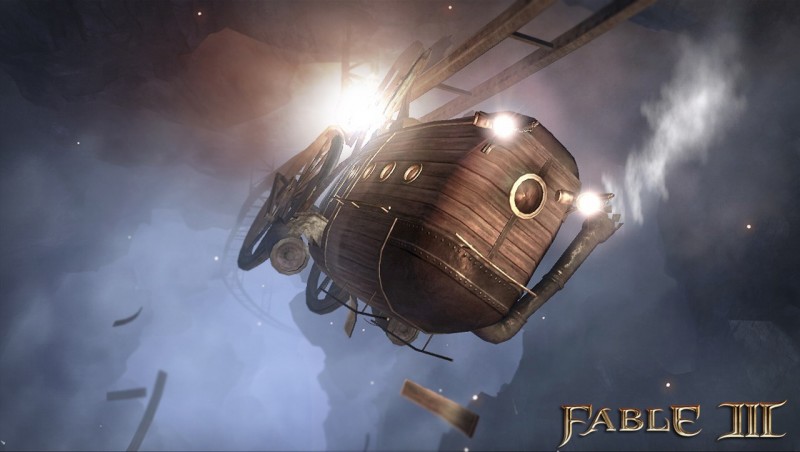

Get the Game Informer Print Edition!
Explore your favorite games in premium print format, delivered to your door.
- 10 issues per year
- Only $4.80 per issue
- Full digital magazine archive access
- Since 1991


